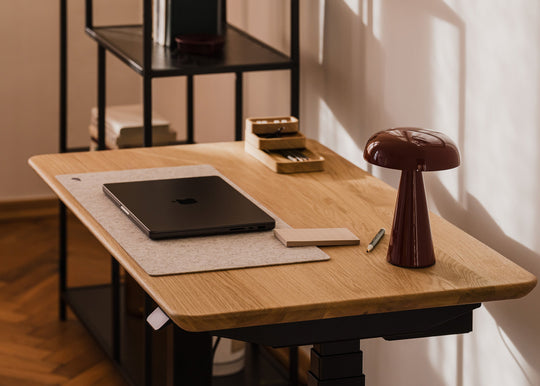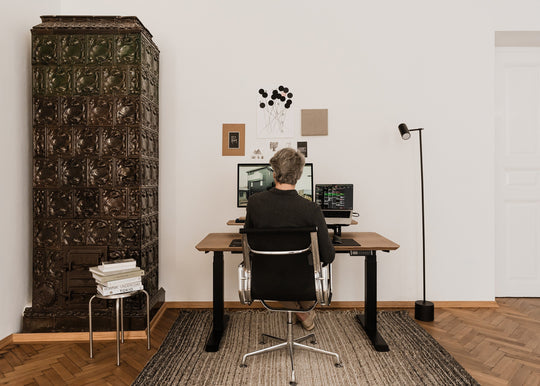
The women of design – inventors, architects, and creators
It is a great shame that much of recorded history sorely lacks female presence. However, the absence of evidence is not evidence of absence – Anna Kowalczyk’s Brakująca połowa dziejów (‘The missing half of history’), or Katherine Halligan’s Herstory are just a couple of many books that focus on the persistently overlooked or lesser-known female figures. Yet despite being frequently omitted from the narrative, women’s creative energy has continued to find its outlet in many fields, including applied arts: in interior design, architecture, industrial design, and graphics. Allow us to introduce a few female creators who made their mark in design history (or maybe herstory ;)).

Photo by Unseen Studio on Unsplash
Candace Wheeler
Often dubbed the ‘mother’ of interior design, Candace Wheeler was an avid supporter of the American women’s campaign for financial independence. In 1877, she founded the Society of Decorative Arts in New York, an organization helping underprivileged women (especially those widowed during the Civil War) by teaching them crafts, sewing, or interior design and giving them the ability to independently earn a living. They could then sell their craft through the New York Exchange for Women’s Work, launched just a year later with Wheeler’s help.
Another paramount step in her career was co-funding an interior-decorating company together with Louis Tiffany. The Tiffany & Wheeler firm (also known as Tiffany & Co.) decorated both private interiors and public buildings – some notable examples including the Madison Square Theatre, The Union League Club, or Mark Twain’s house. In 1883, Candace established her own textile brand Associated Artists, famed for its silk fabrics which change colors depending on the light.
In 1893 Candace Wheeler led the decoration works on the Woman’s Building at the Chicago World’s Fair. She spent her later years writing books and articles on interior design.
Elsie de Wolfe
The first female American interior designer to have completed projects for the likes of Oscar Wilde or the Duke and Duchess of Windsor. Before she began her adventure with interior design, de Wolfe pursued acting – she first appeared in Charles Frohman’s band before starting her own theatre group on Broadway. She retired from acting in 1905.
Her design debut was the interior of the Colony Club – New York’s first social club for women. Its décor was sophisticated but also simple, cohesive, and spacious thanks to appropriately placed mirrors. The style created by Elsie de Wolfe went against the previously very popular Victorian aesthetic brimming with eclectic excess.
Wolfe’s activity was not limited to the US: one of her key endeavors was the Villa Trianon in Versailles, which she purchased and refurbished with her partner Elisabeth Marbury, making it their new social hub.

Photo by Cathryn Lavery on Unsplash
Charlotte Perriand
A French architect and interior decorator, École de L’Union Centrale des Arts Décoratifs’ graduate, and an influential visionary of contemporary design – Charlotte Perriand’s unique design of the Bar sous le Toit (bar under the roof) using glass, leather, aluminum, and chrome brought her a lot of critical acclaim. Born at the beginning of the XXth century, Perriand faced discrimination in the male-dominated field of architecture. Having finished her degree, she sought to find work at the Le Corbusier studio but was rejected with the words “we don’t embroider cushions here.” A few months later, however, her undeniable talent was recognized by the same famous architect at the Salon d’Automne (Autumn Salon) and prompted him to make her a job offer.
Perriand collaborated with Pierre Jeanneret, Fernand Léger, and Jean Prouvé, yet she maintained her own signature style. She found inspiration in everyday life she observed play out on the streets of Paris but also in the design of objects such as cars or bicycles. This helped her create avant-garde furniture designs, combining impeccable style with comfort. Some of her works are still being produced today, for example the distinctive chairs made from curved chrome tubes and leather.
Ray Eames
Ray and her husband Charles met at the Cranbrook Academy of Art while Ray was a student and Charles led the industrial design department. Unafraid of innovation and experimentation, the duo quickly gained cult status. Their material of choice was plywood with which they could form almost anything and which they very effectively paired with other materials. Their first notable invention was a plywood leg splint and, by the end of the second world war, they have manufactured around 150 000 orders for the US Navy.
Ray was an incredibly talented textile designer with a gift for creating original plywood models. Her designs combined functionality with exceptional aesthetics. Perhaps the most well-known Eames piece was the 1956 Lounge Chair which features some curved and modelled plywood fused with upholstered leather seat and backrest. Apart from furniture, home designs, and toys, the pair also developed some innovative methods of working with various materials, such as molding wood using steam. Thanks to their immense creativity and effective partnership, Ray and Charles became some of the most influential creators who changed the contemporary design scene for good.

Photo by Christina @ wocintechchat.com on Unsplash
Florence Knoll
A talented and inspiring female architect who introduced new standards to American design – Florence Knoll elevated furniture and interior design to an entirely new level. Educated in the spirit of Bauhaus (she studied under Ludwig Mies van der Rohe at the Illinois Institute of Technology and later worked with Walter Gropius and Marcel Breuer); she cultivated an interior design approach which championed maximum functionality.
Florence designed interiors rather holistically – she matched the furniture to the available space and picked the appropriate textiles and colors by creating previously uncommon moodboards. Together with her husband Hans, she led the Knoll company and created the Knoll Planning Unit, charged with devising unique solutions to meet the needs of the users as well as the available space. Comfort, practicality, and modern yet sophisticated aesthetics played a key role in Florence’s designs. Instead of bulky, overwhelming furniture, she equipped her interiors with a minimalistic lightness, spaciousness, and dynamics. Knoll acquainted America with European modernism and some of her pieces – such as the famous mid-century modern sofa – remain in production to this day.
Teresa Kruszewska
A Polish interior and furniture designer who rose to fame by releasing incredible children’s furniture collections, developmental toys, and chairs (including the cult Tulip armchair). She collaborated with the ŁAD Artists’ Cooperative, cocreated by her academic mentor, a prominent designer Jan Kurzątkowski. She then became a lecturer at the Interior Design Department of the Academy of Fine Arts in Warsaw where she led a Furniture Design Workshop.
Thanks to her international fellowships in Finland (in Alvaro Aalto’s workshop) and in the United States (the Rhode Island School of Design in Providence) Kruszewska was able to study new technologies and expand her knowledge of ergonomics which she then used in her work. Teresa’s furniture for children stood out with its considerable creativity and attention to detail – besides practicality, her solutions sought to assist children’s emotional and mental development: for instance, a desk with a moving worktop had a storage space filled with painted blocks to create various scenes.

Photo by Kelly Sikkema on Unsplash
India Mahdavi
An Iranian French contemporary interior designer famed for her bold and unconventional style of playing with form and color. Having received education from the École des Beaux in Paris (architecture), Parsons (furniture design), and School of Visual Arts in New York (graphic design), Mahdavi draws inspiration from the many cultures she encountered and creates phenomenally vibrant designs that are simply impossible to ignore.
Her most notable projects include the Ladurée restaurants in Los Angeles, Tokyo, and Geneva, the Sketch Restaurant at the Gallery of London, Le Germain in Paris, and the Dior Maison collection. Apart from interior décor, Mahdavi makes furniture, accessories, and installations – both functional and decorative. Her trademark colors, deep and intense, create an energetic harmony between elegance and cartoonish aesthetics.
***
The protagonists of this week’s post are but a small fraction of design herstory. However, we hope that the above examples of such creative and remarkable women inspire all of us, regardless of gender, to boldly live and create.








